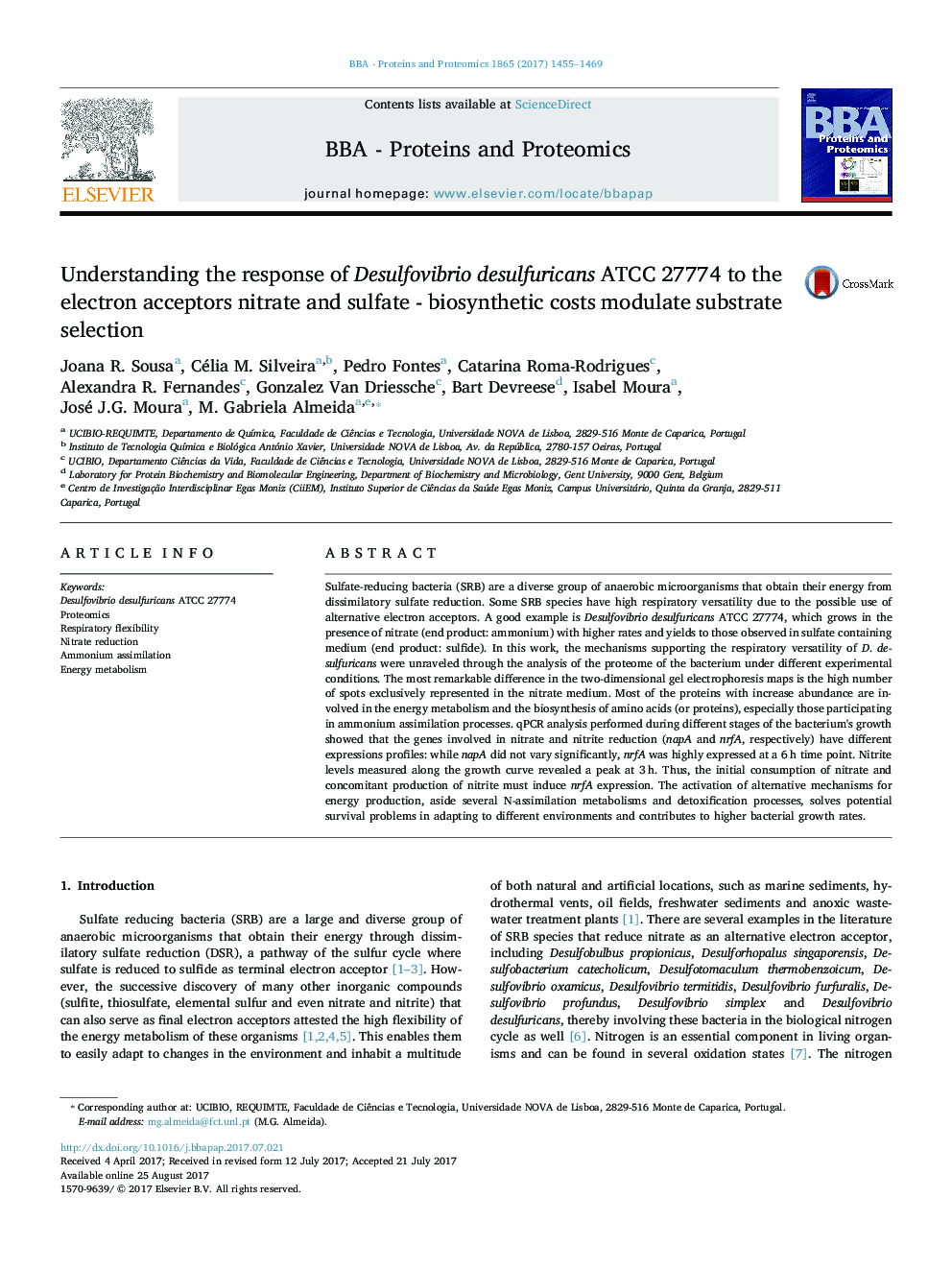| Article ID | Journal | Published Year | Pages | File Type |
|---|---|---|---|---|
| 5131876 | Biochimica et Biophysica Acta (BBA) - Proteins and Proteomics | 2017 | 15 Pages |
â¢The respiratory flexibility of D. desulfuricans is studied by proteomics and gene expression analysis.â¢In order to adapt to the nitrate containing medium, alternative metabolic pathways are activated.â¢Most of the proteins with increased abundance are involved in protein biosynthesis.â¢Genes encoding the nitrate and nitrite reducing enzymes are up-regulated in a step-wise fashion.
Sulfate-reducing bacteria (SRB) are a diverse group of anaerobic microorganisms that obtain their energy from dissimilatory sulfate reduction. Some SRB species have high respiratory versatility due to the possible use of alternative electron acceptors. A good example is Desulfovibrio desulfuricans ATCC 27774, which grows in the presence of nitrate (end product: ammonium) with higher rates and yields to those observed in sulfate containing medium (end product: sulfide). In this work, the mechanisms supporting the respiratory versatility of D. desulfuricans were unraveled through the analysis of the proteome of the bacterium under different experimental conditions. The most remarkable difference in the two-dimensional gel electrophoresis maps is the high number of spots exclusively represented in the nitrate medium. Most of the proteins with increase abundance are involved in the energy metabolism and the biosynthesis of amino acids (or proteins), especially those participating in ammonium assimilation processes. qPCR analysis performed during different stages of the bacterium's growth showed that the genes involved in nitrate and nitrite reduction (napA and nrfA, respectively) have different expressions profiles: while napA did not vary significantly, nrfA was highly expressed at a 6Â h time point. Nitrite levels measured along the growth curve revealed a peak at 3Â h. Thus, the initial consumption of nitrate and concomitant production of nitrite must induce nrfA expression. The activation of alternative mechanisms for energy production, aside several N-assimilation metabolisms and detoxification processes, solves potential survival problems in adapting to different environments and contributes to higher bacterial growth rates.
